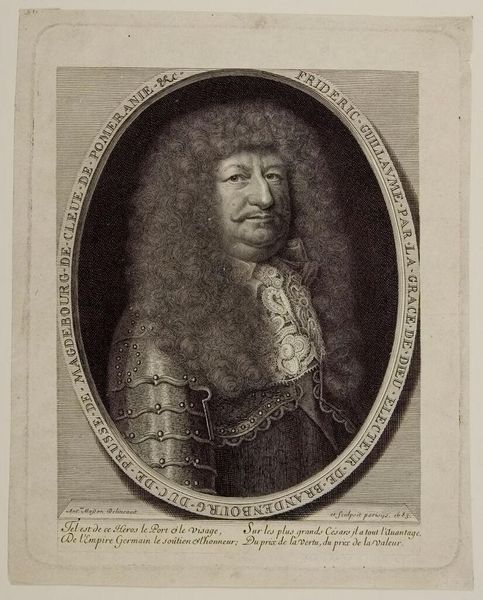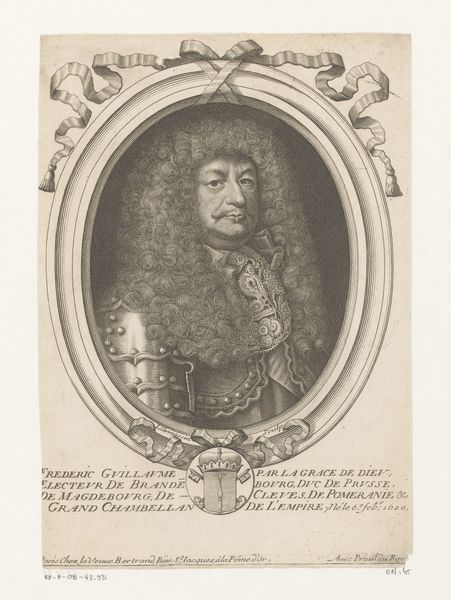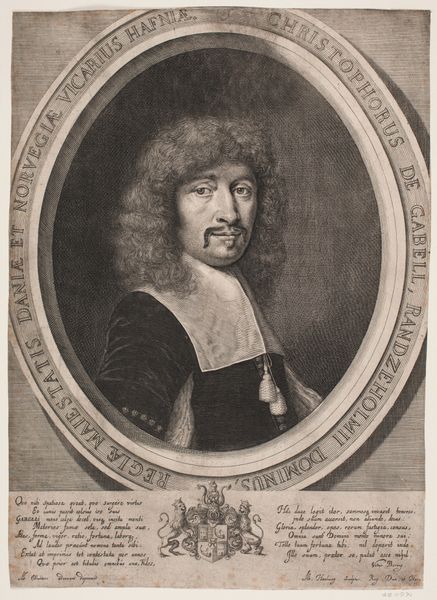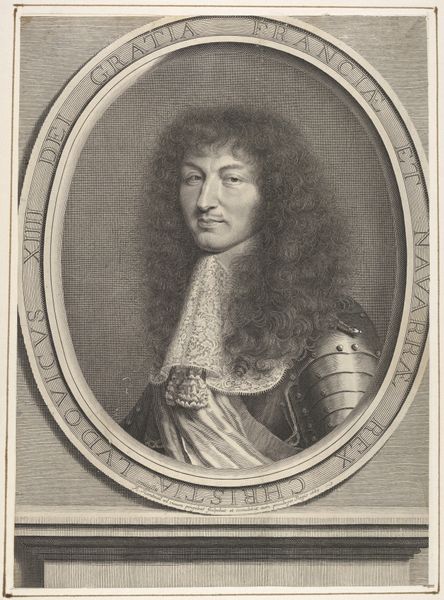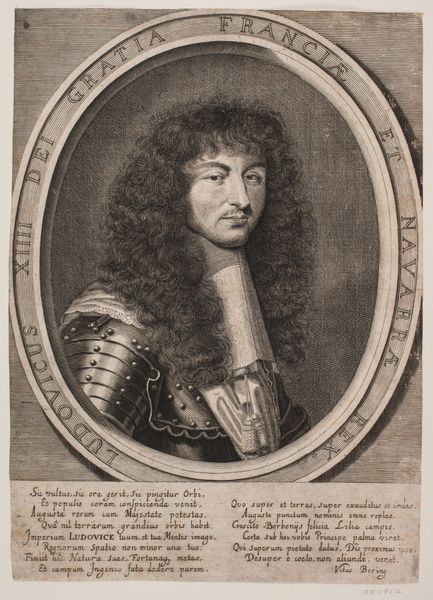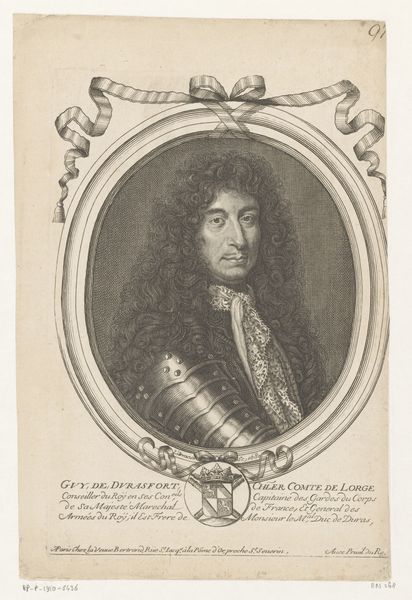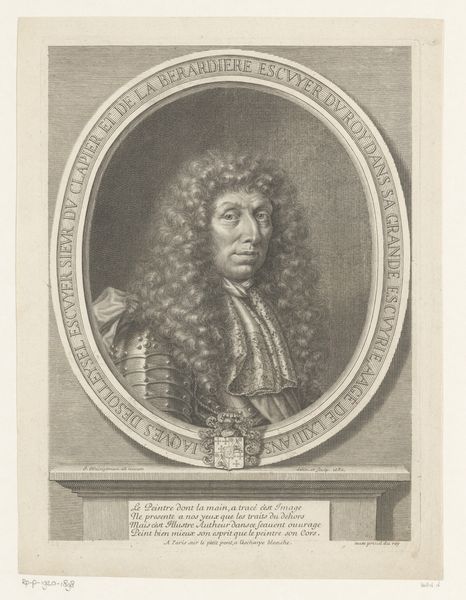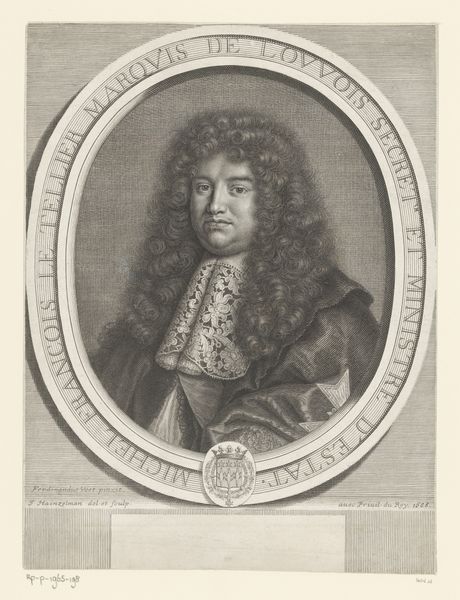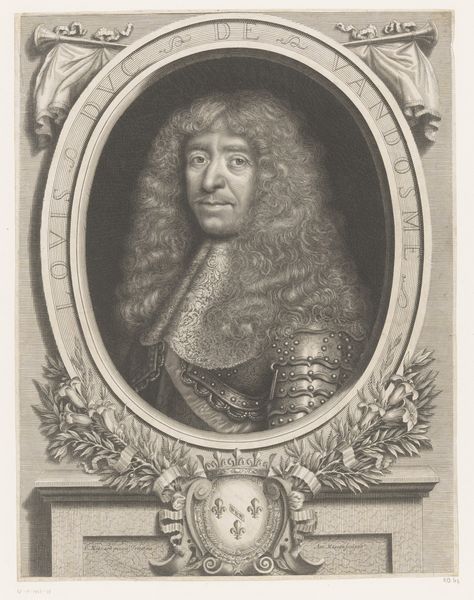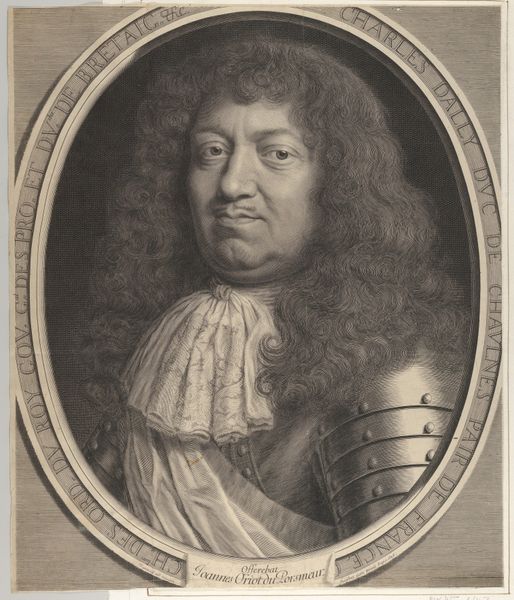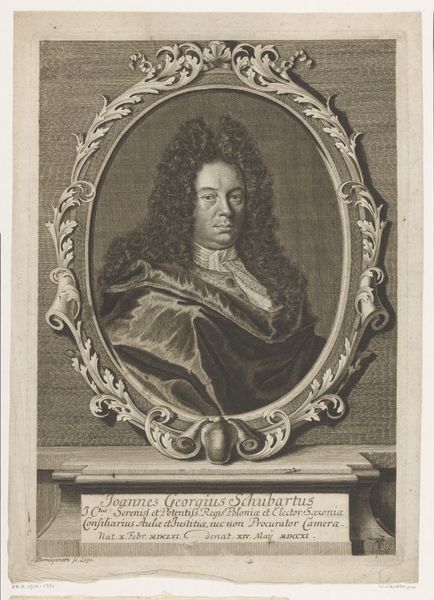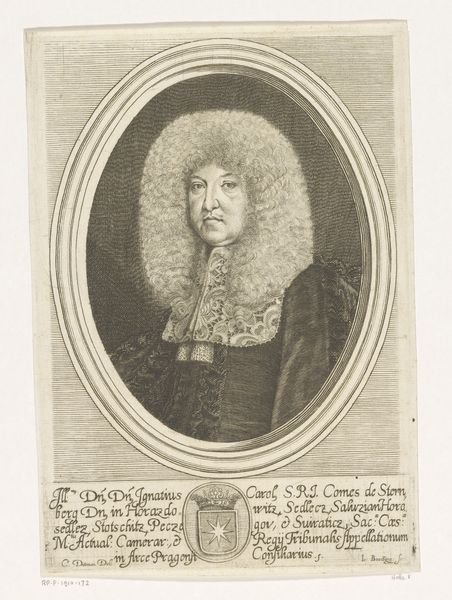
Dimensions: height 265 mm, width 199 mm
Copyright: Rijks Museum: Open Domain
This portrait of Frederik Willem I of Brandenburg was made by Antoine Masson in the 17th century, using engraving techniques. The material of choice here – the metal plate – is crucial. Lines are incised into its surface to hold ink, then printed onto paper. Look closely at the incredibly fine detailing, achieved through laborious and highly skilled labor. Notice the armour, the luxurious wig, the lace collar. Masson uses line and tone to convey their texture and weight. It's a virtuoso performance, all the more impressive when you consider the number of impressions that could be pulled from a single plate, an early form of mechanical reproduction. This wasn't simply a means of multiplying images; it made portraits like this available to a wider audience, spreading the influence and authority of its subject. So even in a relatively small artwork like this one, we can appreciate the complex interplay between materials, making, and social context. It’s a powerful reminder that even the finest works of art are bound up with issues of labour, politics, and consumption.
Comments
No comments
Be the first to comment and join the conversation on the ultimate creative platform.
